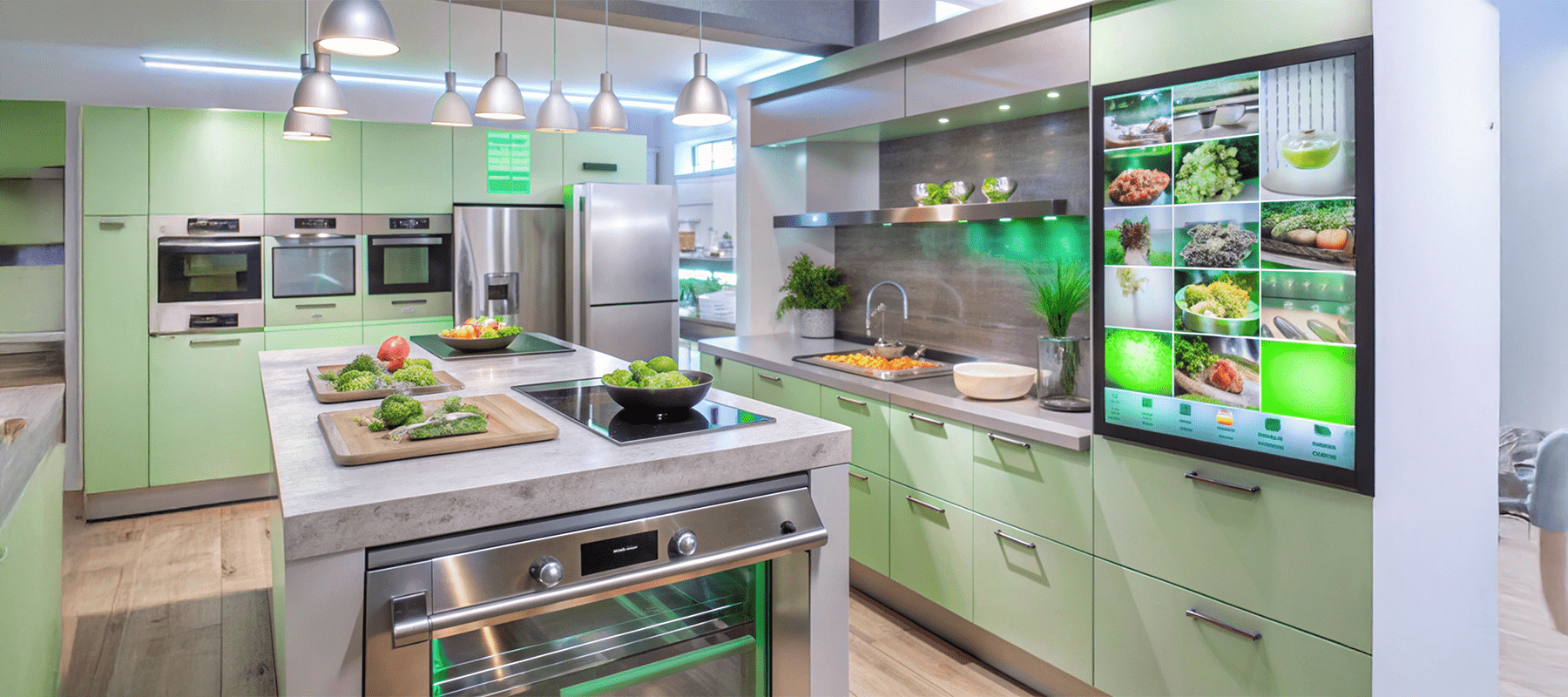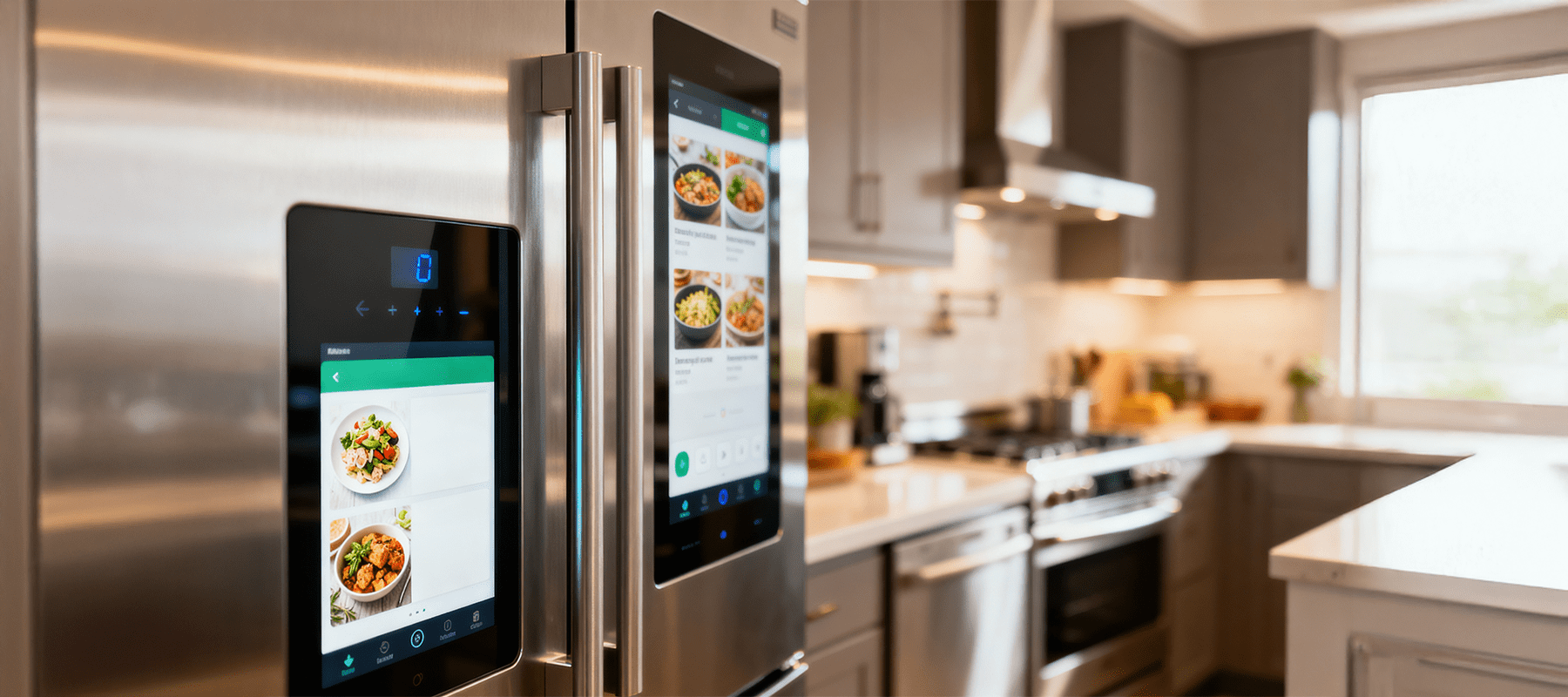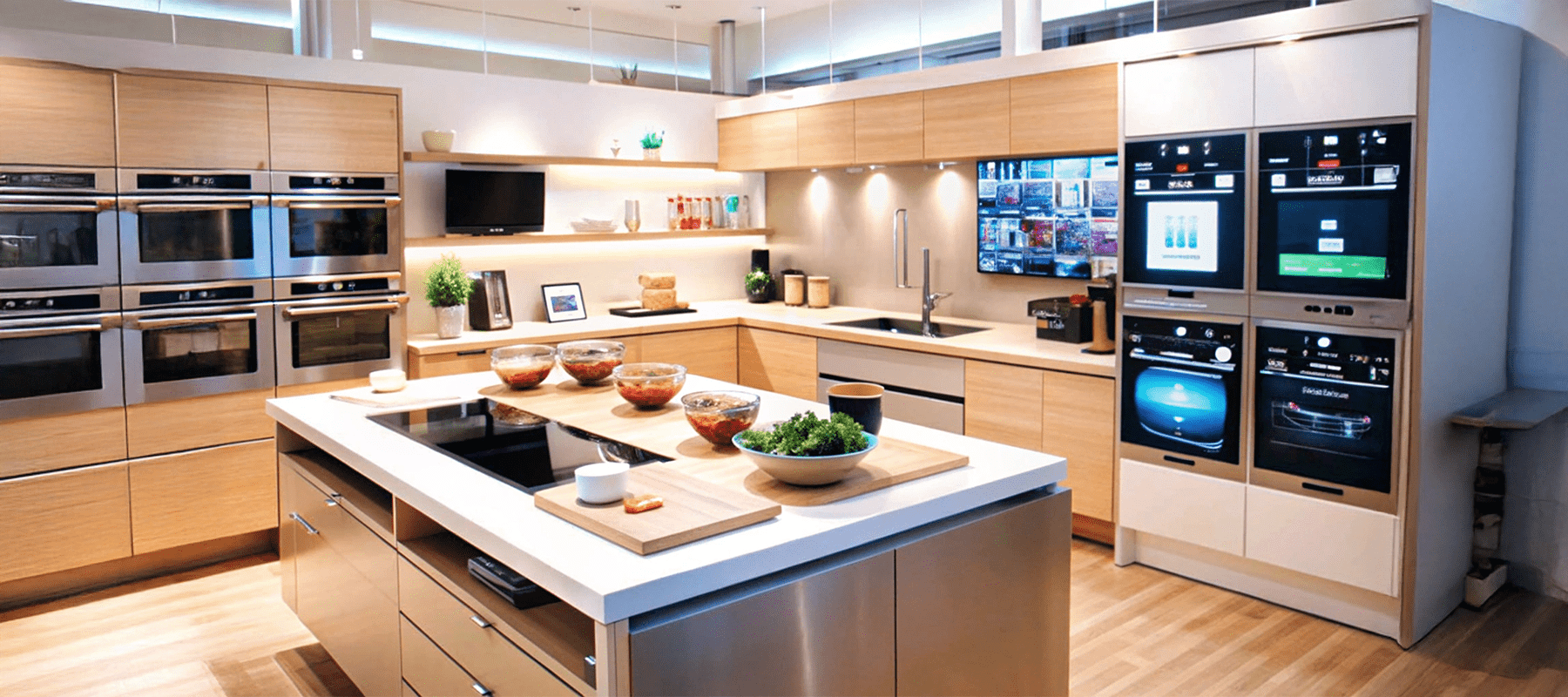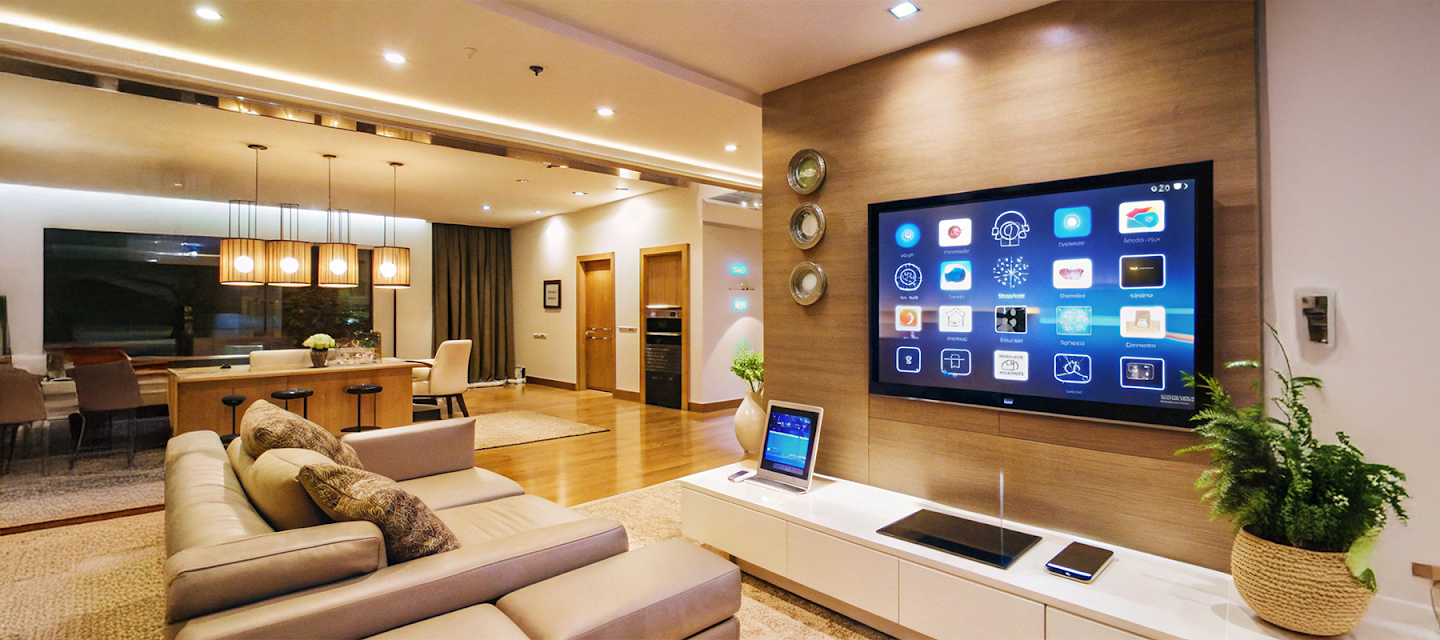Today I am going to share my journey to a secure smart kitchen that helped me to protect food, appliances and energy flow in my home. Similar to most of the fellow homeowners across the United States, I have always been interested in adopting technology genuinely proven to improve daily life. Very soon, I made my kitchen the focal point of my smart home ambitions, where culinary activities were scarcely at rest. No wonder my kitchen is a significant energy consumer. However, beyond convenience, I was more concerned about security, efficiency, and peace of mind.
So, let me share my personal journey and insights into implementing smart kitchen security strategies in the USA. These are practiced to protect my family’s food, our valuable appliances, while optimizing our energy use.
How does smart kitchen security help in protecting food, appliances, and managing energy for US households?
Fancy gadget was not the one and get-all into my smart kitchen tech. What matters most to me is solving real-world problems. Food waste was a major frustration. Often, the items at the back of the fridge would remain unnoticed for days, and contribute to unnecessary spoilage. But after bringing home my smart refrigerator, it entered the game as the game-changer for food safety and smart kitchen management. It has internal cameras that help me check my inventory from the grocery store. So I purchase only what I need. Furthermore, the advanced temperature sensors actively monitor the optimal conditions – it is my notification alert for me to check whether the door is left ajar or if power fluctuations are occurring that might compromise freshness. So, owing to this proactive approach, wastage has been significantly cut down, hence my family can consume fresh, safe food.
Now, together with food, I had to protect my significant investment in kitchen appliances. For instance, my smart oven performs self-diagnosis. It alerts me to potential issues before they become expensive repairs. It stands out as the prime example of how smart kitchen security solutions in the USA extend beyond traditional alarm systems. I have also integrated leak detectors under my sink and near the dishwasher that provide immediate alerts to my phone. I can prevent catastrophic water damage, even if a tiny drip occurs. I have truly regained my peace of mind, thanks to this holistic approach to kitchen appliance safety.
After that, there is energy. Since I live in a state with variable electricity rates, managing our kitchen’s energy footprint becomes a personal quest. My coffee maker and toaster oven have smart plugs that allow me to schedule their operation. The best part is they don’t draw phantom power. My smart range hood is linked to my cooktop, which is activated when necessary. The fan speed gets adjusted based on cooking intensity. This control level over smart kitchen energy in the USA has noticeably reduced our monthly utility bills; therefore, my smart kitchen has become convenient as well as economical.

The top security concerns for smart kitchens in the USA and practical solutions
Delving deeper, I realized that taking greater responsibility is the first stage to great connectivity. Data breaches and unauthorized access were my initial concerns. But are these devices truly secure? Vulnerability of connected devices to cyber threats is one of the biggest concerns for most US homeowners. A hacked smartphone appliance is likely to expose personal data or even entry points into a broader home network.
I took a multi-pronged approach as my solution:
- Implementing strong, unique passwords – A non-negotiable take-up for every device and router.
- Secure network (WPA3) – I have upgraded my Wi-Fi to WPA3 encryption for a more robust defense against external threats.
- Dedicated IoT network – For my smart devices specifically, I have created a separate guest network. It isolated them from my primary network that holds all sensitive data.
- Regular firmware updates – I have installed updates from manufacturers diligently, knowing these often include critical security patches.
Reliability of alerts became another concern. What will happen if my internet goes down? There are many smart kitchen security solutions in the USA that are now offering local processing capabilities or cellular backups for critical alerts. It ensures that I get all vital notifications about leaks or potential fires. Indeed, this redundant system is crucial for true kitchen appliance safety.
How do AI and Sensors work together for securing food, appliances, and energy use in American homes?
The seamless interplay of AI and sensors is the real magic behind the security and efficiency of my smart kitchen. My smart fridge can constantly monitor temperature and humidity because it is embedded with miniature sensors. The AI algorithms learn my food consumption patterns that predict spoilage dates. It is not only a fancy timer, but it is an intelligent system designed for waste reduction while enhancing food safety and smart kitchen operations.
For appliance protection, integrated sensors detect all anomalies like unusual vibrations in the dishwasher or abnormal heat patterns from the oven. Analyzing these sensor inputs against normal operating parameters, AI flags the potential malfunctions before they turn critical. For instance, my smart oven once alerted me about an inconsistent heating element that allowed me to schedule a proactive service call. Hence, it helps in preventing a complete breakdown and extending the appliance’s lifespan – proving a perfect example of advanced kitchen appliance safety.
When the concern is all about energy, smart meters and current sensors measure the real-time electricity consumption from individual appliances. Then AI crunches this data after identifying energy hogs. Then it suggests optimization strategies. It learns our peak usage times and subtly makes adjustments to power drawing for non-essential devices that contribute significantly to smart kitchen energy in the USA. This intelligent automation is the reason why I so strongly advocate for smart kitchen security strategies in the USA.
Privacy issues and data protection methods with US smart kitchen technology
A smart kitchen’s convenience inevitably raises questions about privacy. Who has access to my cooking habits, my grocery list, or even images from inside my fridge? Here is where AI kitchen privacy turns into a critical topic. There are many smart devices that collect huge amounts of data – usage patterns, video, or even voice commands.
I take this approach to safeguard my family’s privacy:
Reading privacy policies –
First, I thoroughly reviewed the privacy policies of manufacturers, prioritized those with clear data handling practices and strong encryption before I purchased them.
Opting out of data sharing –
I had configured settings to opt out of non-essential data sharing with third parties, wherever possible.
Understanding data storage –
I prefer devices capable of processing more data locally on the devices rather than constantly sending everything to the cloud.
Regular audits –
I review the permissions to my smart kitchen apps and devices periodically, which revokes any that seem excessive or unnecessary.
Anyone embracing smart kitchen security solutions in the USA, while maintaining their digital privacy, will need these proactive steps.

Trends in smart kitchen adoption with security and energy efficiency as the main focus in the United States
The fast-evolving smart kitchens, driven by increasing consumer demand for security, convenience, and sustainability, are now the trendsetter. The US is showing a shift from standalone gadgets to integrated ecosystems. Now the manufacturers are prioritizing interoperability, allowing the devices from different brands to communicate seamlessly. This helps in enhancing overall smart kitchen security strategies in the USA by creating a more cohesive defense.
Energy efficiency is a core expectation, no longer a niche feature. With electricity prices fluctuating and environmental consciousness growing, homeowners in the USA are actively seeking solutions that reduce their carbon footprint and save money. What is becoming standard is AI-powered energy management, dynamic scheduling, and integrating with utility demand-response programs. This focus on smart kitchen energy in the USA is best for the planet, and even wonderful for the wallet. My firm belief is that the future of the American kitchen is smart, secure, and sustainable.
On a final note,
I have indeed grabbed the smart kitchen technology, and it made for a truly positive experience. Because I have focused on robust smart kitchen security strategies in the USA, I could implement the practical solutions for food safety, smart kitchen management and optimized smart kitchen energy in the USA. Likewise, I could transform my kitchen into a safer, more efficient, and more enjoyable space. My confirmed personal review is that with careful consideration of AI kitchen privacy and a proactive approach to kitchen appliance safety, anyone and everyone can truly achieve a secure and smart culinary hub. The main requirement is about intelligent living and not only about gadgets.








